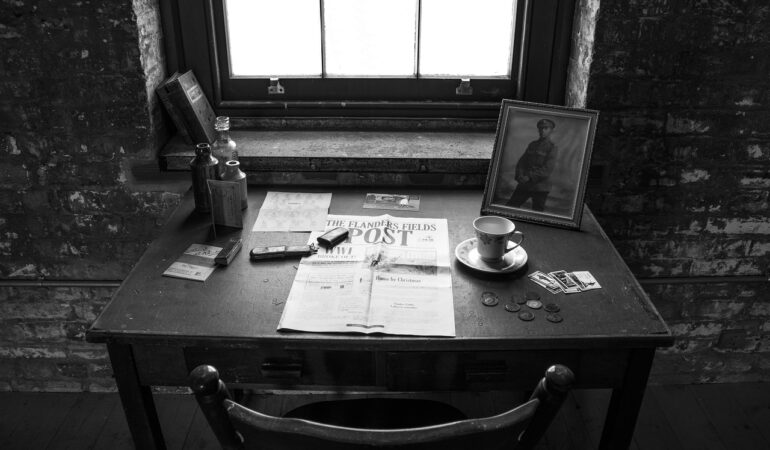Behind the Camera the Stories and Sacrifices of First World War Photojournalists - The Lens of History

The First World War was a monumental event in human history, with millions of lives lost and hundreds of battles fought on land, sea and air. Yet amidst the chaos of conflict, there emerged a remarkable group of individuals – photojournalists who ventured into the warzones to document the struggles and sacrifices of those involved. Through their lens, these brave photographers were able to capture powerful images that told the story of the war in ways that words simply couldn’t.
The first official war photographer was Australian born Frank Hurley, who joined the Australian Imperial Force in 1916 and shot over 3,000 photos during his time at Gallipoli and on the Western Front. His iconic images depict soldiers taking cover amidst gunfire, wearing gas masks during battles and enduring the harsh conditions of trench life.
Other notable World War One photographers include Ernest Brooks, a British soldier who captured scenes of the Somme and Passchendaele battles, and James Edward Price, an American photographer known for his portraits of soldiers in the trenches. Some photographers documented the war from afar – such as Robert Capa, who snapped iconic images from London during the Blitz – while others used their cameras to bring attention to the human cost of conflict, such as the work of Hungarian war photographer Andre Kertesz.
These photographers risked their lives to tell the stories of those who fought and suffered during the Great War – stories that continue to resonate with us today. As we commemorate this centenary anniversary, let us pay tribute to these brave photojournalists and remember their sacrifices so that future generations may never forget.
Illuminating the Shadows: Unveiling the Untold Stories of First World War Photojournalists
Photojournalists of the First World War put themselves at great risk to capture images of the conflict and tell stories about its human costs.
These brave photographers, often referred to as “shadows” due to their ability to blend into the background, risked their lives in order to take photos of battles and other human tragedies.
By capturing powerful images of the war, they were able to document history in a way that words simply couldn’t.
Taking photographs during a war was no small feat. These people had to contend with the dangerous conditions on the battlefield and the ever-changing political and social landscape of the time. Not only did they have to brave enemy fire, but they also had to navigate censorship laws and restrictions imposed by military leaders.
Despite these challenges, these people persevered in their mission to bring the truth of war to light. Their photos are a testament to their courage and dedication, and they continue to educate people about the realities of war today.
Shadows of Conflict: The Emotional Toll on First World War Photojournalists
The horrors of the First World War were far from hidden from public view. For those brave enough to document the conflict, it was a responsibility fraught with emotional pain and personal sacrifice. While they sought to capture the scenes of battle in an effort to raise awareness of the realities of war, they often found themselves in difficult positions that impacted them both mentally and emotionally.
These photographers were often witness to scenes of death and destruction, and were expected to remain professional amidst the chaos. Not only did they have to contend with enemy fire, but also had to navigate censorship laws and restrictions imposed by military leaders.
The photographs taken by these brave peoples during the First World War are a testament to their courage and dedication. Through their lens, we can still get a glimpse into what it was like to experience the Great War. Not only did they capture powerful images that showcased the human cost of conflict, but also provided key insights into the scale and scope of the war.
Their work continues to be used today to educate people about the realities of war, and to honor those who fought and died in it.
While these images are often presented as clear and unmediated representations of the war, they only exist because of the hard work, dedication, and many sacrifices made by those who took them.
The work of First World War photojournalists is still celebrated today. Their images remain an important part of our collective memory of the Great War, and are often used to educate new generations about the realities of conflict. Over the years, numerous books, articles, and exhibitions have been dedicated to their work.
In addition, a number of organizations and initiatives have been created to honor these brave peoples and their sacrifices. For example, the Photojournalist Memorial Fund was established in 2017 to provide support for the families of photojournalists killed in conflict zones around the world. By supporting these efforts, we can ensure that these pioneering photographers are remembered for generations to come.